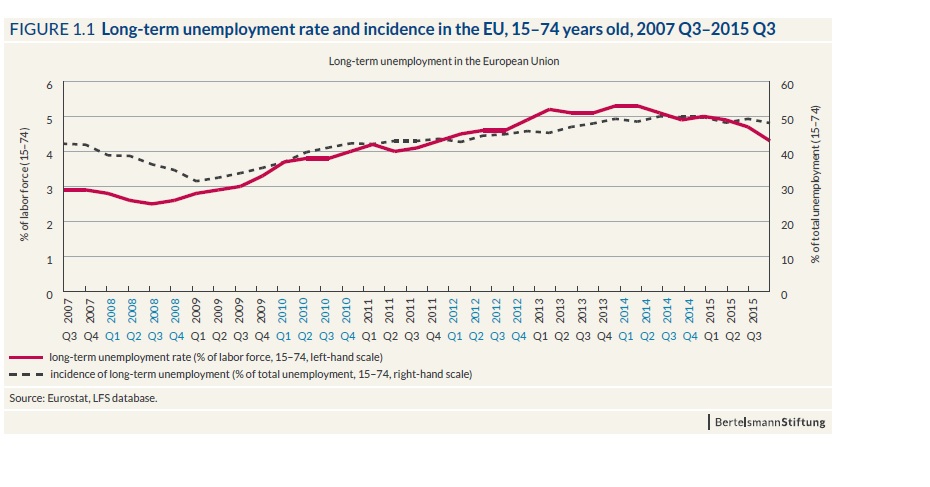Duell, Nicola, Thurau, Lena, Vetter. Tim, (2016), “Long-term Unemployment in the EU: Trends and Policies”, Bertelsmann Stiftung Study, 2016
As a consequence of the 2008 global economic and financial crisis, long-term unemployment has, yet again, become one of the key issues on the European labor market. In the third quarter of 2015, the European Union recorded some 22 million unemployed. Nearly half of these individuals (48.2 %) were unemployed for 12 months or longer and thus considered long-term unemployed. The unemployment rate amounted to 9.3% of the labor force and the LTU rate to 4.3%. From 2004-2008, against the backdrop of relatively rapid growth and rising employment rates throughout the EU, both unemployment and long-term unemployment had been declining. This trend was interrupted by the Great Recession that caused sharp increases in unemployment in many countries. The depth and persistence of the crisis finally led to a resurgence of long-term unemployment to historically high levels.
Relevant posts
- Heidenreich, Martin, (2015), “The end of the honeymoon: The increasing differentiation of (long-term) unemployment risks in Europe”, Journal of European Social Policy, Issue 4, Volume 25, pp. 393-413, October
- Christodoulakis, Nicos, Axioglou, Christos, (2016), “Underinvestment and unemployment: the double hazard in the Euro Area”, Bank of Greece, April




